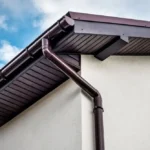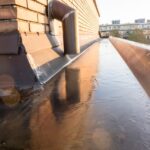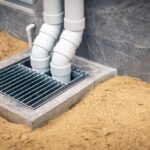When it comes to maintaining a home, one of the critical aspects often overlooked is ensuring proper roof water runoff. Water damage can lead to significant structural issues, affecting not just the roof but the overall integrity of the house. Therefore, understanding how to ensure proper roof water runoff is essential for homeowners looking to protect their investment and maintain a safe dwelling.
The importance of a well-designed roof drainage system cannot be overstated. It not only protects your house from water damage but also helps in managing rainwater effectively. By ensuring proper roof water runoff, you can prevent issues like mold growth, foundation damage, and landscape erosion.

Understanding Roof Water Runoff
What is Roof Water Runoff?
Roof water runoff refers to the water that flows off a roof during and after a rainstorm. Proper management of this runoff is crucial to avoid water pooling around the foundation, which can lead to leaks and damage.
Importance of Managing Roof Water Runoff
Managing roof water runoff is essential for preventing a variety of problems associated with excess water. These problems include soil erosion, waterlogging, and potential damage to the buildings foundation. Proper management ensures water is channeled away from the home efficiently.
Components of a Roof Drainage System
Understanding the components of a roof drainage system can help homeowners implement effective solutions for water runoff. The primary components include gutters, downspouts, and drainage pipes.
Gutters
Gutters are installed along the roof edge to collect and direct water to the downspouts. It is vital to keep gutters clean and free of debris to ensure they function correctly.
Downspouts
Downspouts are vertical pipes that channel water from the gutters down to the ground level. Proper placement and maintenance of downspouts are crucial to ensure water is directed away from the house.
Drainage Pipes
Drainage pipes further direct the water away from the foundation of the house, reducing the risk of water damage. These pipes should be checked regularly for any blockages or damages.
Steps to Ensure Proper Roof Water Runoff
Regular Maintenance
Regular maintenance of the roof drainage system is essential. This includes cleaning gutters and downspouts, checking for leaks, and ensuring all components are in good working condition. For more tips on maintaining your roof drainage system, you can visit Sealing Roof Drainage Systems.
Install Gutter Guards
Installing gutter guards can help prevent debris from clogging the gutters, ensuring a smooth flow of water. This is especially important in areas with heavy foliage.
Ensure Proper Slope
The slope of the gutters should be checked to ensure water flows towards the downspouts. Improper slope can lead to water pooling and overflowing.
Inspect for Damage
Regular inspection for damages such as cracks or rust in the gutters and downspouts is crucial. Any issues should be addressed promptly to prevent further damage.
Advanced Solutions for Roof Water Runoff
Rain Barrels
Rain barrels can be installed to collect rainwater from the downspouts. This water can then be used for gardening or other non-potable purposes. Learn more about integrating rain barrels into your system by visiting Rain Barrel Systems.
French Drains
French drains are another advanced solution that can help manage water runoff effectively. These drains channel water away from the house, preventing foundation issues.
Conclusion
Ensuring proper roof water runoff is a vital aspect of home maintenance. By understanding the components of a roof drainage system and taking proactive steps, homeowners can protect their homes from water damage. Regular maintenance, advanced solutions like rain barrels and French drains, and professional inspections are key to effective water management. For further insights on choosing the right roof drainage systems, consider visiting Choosing the Right Roof Drainage System.

FAQ
Why is roof water runoff important?
Proper roof water runoff is crucial to prevent water damage to the structure and foundation of a house. It helps in managing rainwater efficiently, thus protecting the home.
How often should I clean my gutters?
It is recommended to clean your gutters at least twice a year, in the spring and fall, to ensure they are free of debris and functioning correctly.
Can I install a roof drainage system myself?
While some homeowners may choose to install roof drainage systems themselves, it is often best to hire a professional to ensure proper installation and avoid any potential issues.
This article contains affiliate links. We may earn a commission at no extra cost to you.







